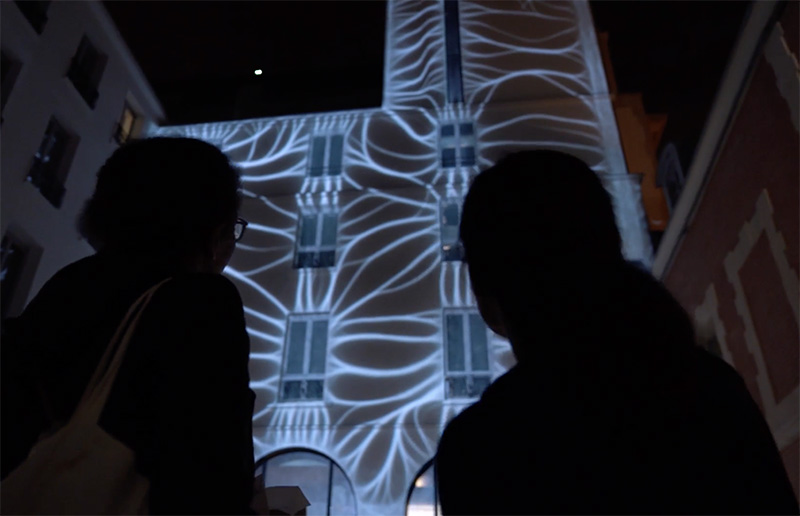Nuit Blanche 2018

« Cells architecture dynamics allows them to adapt to their environment.Within organ they conform to the organ. On a building they conform to the building. »
This project stems from the collaboration between the biologist of the CEA/CNRS and the plasticians from the groupe LAPS. It is based on the use of microfabrication, cell culture, biochemistry, microscopy and video-projection to show living architectures adapting to the architecture of a building.
Cells have a skeleton, the cytoskeleton, made of several networks of filaments. The growth of filaments and contraction of these networks power shape changes and cell motion. But the rules directing these assemblies can?t be revealed in the high complexity of intra-cellular space. They must be studied in simpler and more controled conditions. To that end, scientist break cells into pieces, purify filament components and study their self-organization in cell-free conditions.
The facade of the Interdisciplinary Research Center has been miniaturised to the size of a single cell, ie few hundredths of a millimeter. Cell moves and the growth of isolated cytoskeleton filaments on this structure have been video-recorded on a microscope. Eventually, the movies will be projected onto the original building. Thus, despite the tremendous difference in their spatial and temporal scales, these two worlds will come together for one night.
Conception : CytoMorpho Lab, Groupe LAPS
Réalisation : Benoit Vianay, Christophe Guerin, Jérémie Gaillard, Matthieu Gélin, Thomas Bessy, Chiara de Pascalis, Benoit Souquet, Andreas Christ, Pablo Saez and Manuel Théry pour le CytoMorpho Lab. Nadir Bouassria, Pierre Froment et Erwan Quintin pour le groupe LAPS.
